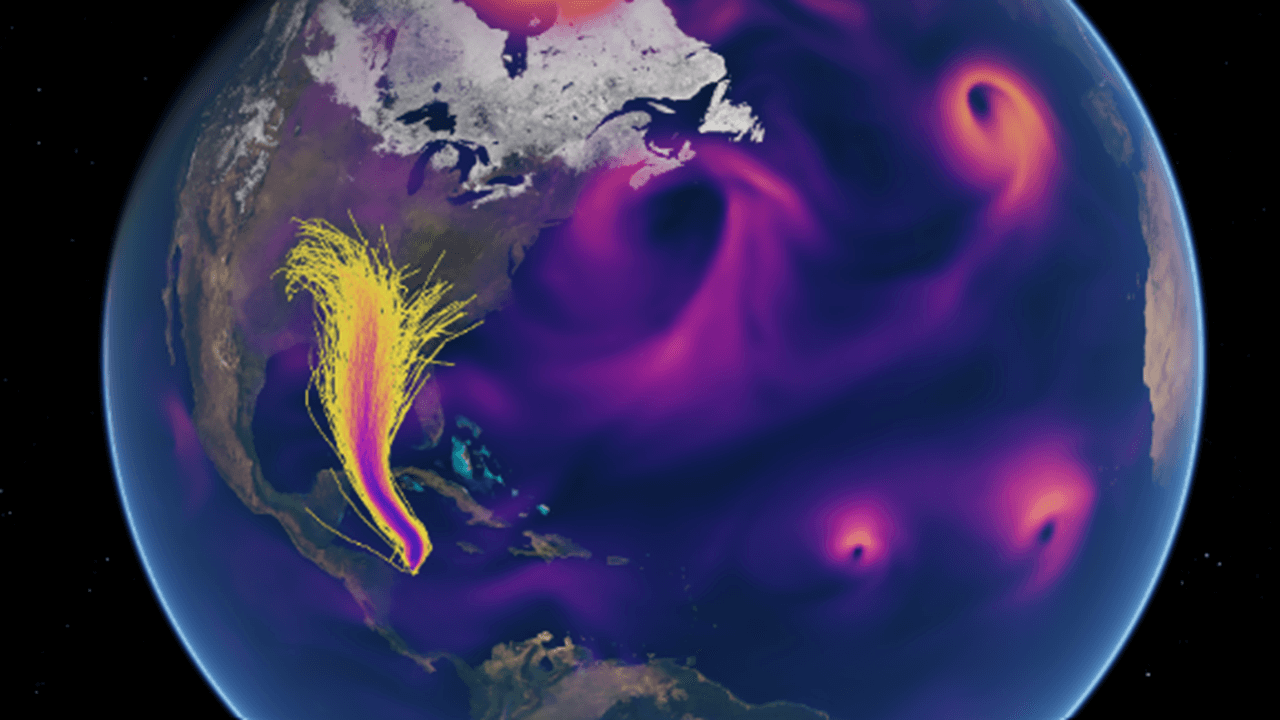Globus Enables New Forecast Models for Extreme Weather Events
August 26, 2025
Improving weather predictions with new ML-based models and techniques at Lawrence Berkeley National Lab and NVIDIA

As “extreme” weather events become increasingly common, researchers are racing to improve how we predict and prepare for them. Thanks to cutting-edge tools and high-powered computing systems, new forecasting models are now delivering faster and more accurate predictions than ever before.
One cutting-edge tool is FourCastNet, a machine learning-driven, high-resolution weather forecasting model. FourCastNet can predict the world’s weather up to two weeks in advance, at an impressive 0.25° resolution and in just one second per forecast timestep—making it orders of magnitude faster and more energy efficient than traditional models. Not only does this dramatically reduce computational costs and turnaround times, but it also increases the ability to sample rare, extreme events.
Complementing this, HENS (Huge Ensembles Neural Simulation) takes weather forecasting a step further. While traditional ensemble models may generate 50–100 possible weather scenarios, HENS produces a staggering 7,424-member ensemble. This scale captures the long-tails of climate distributions, and improves scientists’ ability to study extreme weather.
Streamlining the Workflow
The HENS forecasting process involves repeated cycles: First, a HENS forecast is generated on a supercomputer, creating a massive new dataset. While the next forecast is being generated, the previous one—comprising around 21 TBs—must be efficiently transferred to long-term storage. This transfer process is not trivial and must keep up with the pace of data generation.
To automate and accelerate these data transfers, the Lawrence Berkeley National Lab and NVIDIA team leveraged Globus Flows. By orchestrating and automating complex data management tasks with Globus, they achieved seamless, asynchronous transfers—reliably moving 2 PB of data over just three days. This method proved 10 times faster than using standard Linux tools, and, impressively, enabled them to transfer data even faster than it was generated.
The Future of Weather Prediction
By integrating advanced neural network models with automated, high-speed data management tools like Globus, researchers are reshaping the future of extreme weather forecasting. These breakthroughs empower communities and policymakers to act swiftly in the face of extreme weather events.
Contributors:
William Collins, Ankur Mahesh, Boris Bonev, Noah Brenowitz, Yair Cohen, Peter Harrington, Karthik Kashinath, Thorsten Kurth, Joshua North, Travis O’Brien, Michael Pritchard, David Pruitt, Mark Risser, Shashank Subramanian, Jared Willard
Learn more about HENS:
-Huge Ensembles Part I: Design of Ensemble Weather Forecasts using Spherical Fourier Neural Operators
-Huge Ensembles Part II: Properties of a Huge Ensemble of Hindcasts Generated with Spherical Fourier Neural Operators
“The Globus help desk was outstanding. They guided us through configuring and setting up a Globus Flow, which we used to combine two steps: (1) transferring data asynchronously from temporary scratch space to long-term storage and (2) cleaning up the scratch space. They were very accommodating of our project timelines and requirements, and their response times were quick, friendly, and user-focused. It was a pleasure to work with them, and I look forward to collaborating again in the future. ”
– Ankur Mahesh, grad student at UC Berkeley and Lawrence Berkeley National Lab